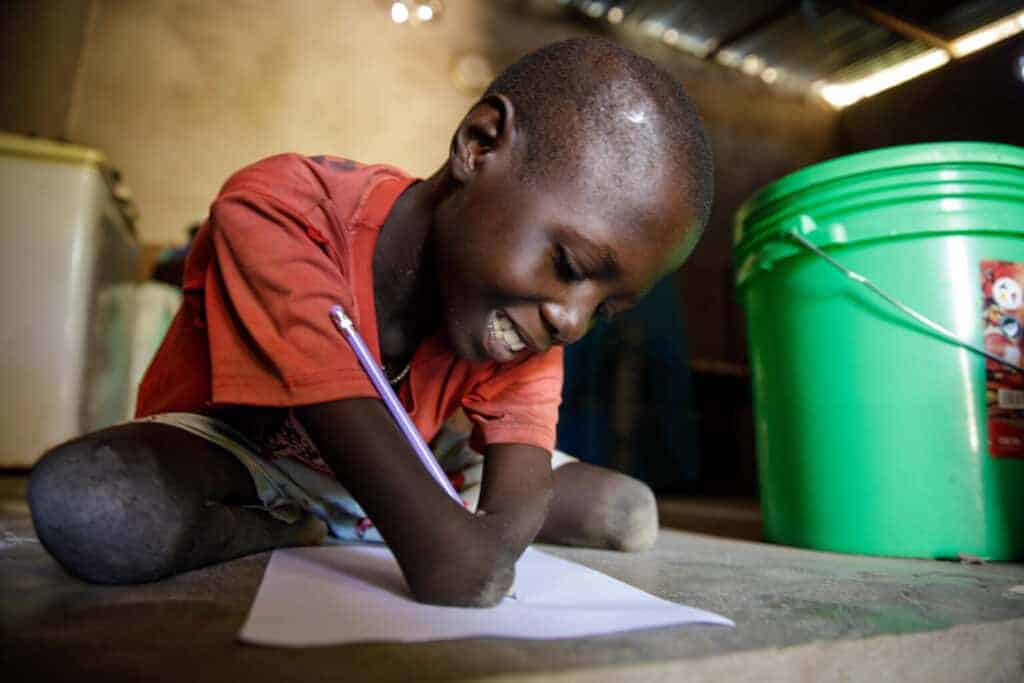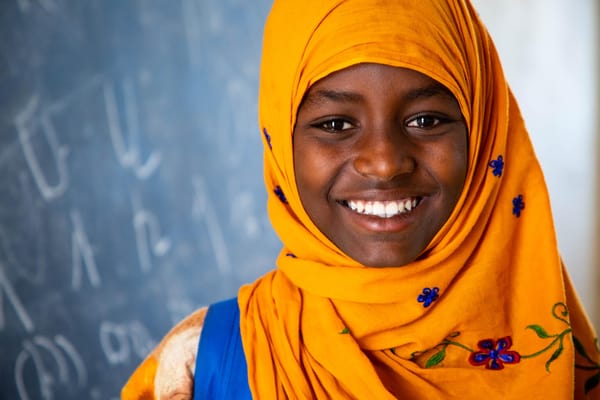In countries around the world, children like Dalton – those with disabilities who have migrated or been displaced – encounter high barriers to full and equal participation in society. Whether they live in humanitarian contexts or high-income countries, this population of children is frequently denied the right to grow, learn and play alongside their peers without disabilities.
A new UNICEF report, Included, Every Step of the Way: Upholding the rights of migrant and displaced children with disabilities, takes an in-depth look at the situation of these children. It examines the critical facets to their well-being: access to proper care and food, school, and safety and protection, while also calling for better data to drive disability-inclusive policies and programming for children on the move.
Millions of children overlooked
There are nearly 240 million children with disabilities worldwide.[1] And at the end of 2021, there were an estimated 36.5 million children displaced across borders or within their own countries due to conflict, violence or other crises.[2] These are highly diverse populations living in a wide variety of circumstances. Yet, they share the experience of being among the most marginalized children around the globe.
Data on the number of children with disabilities who have migrated or been displaced are limited. But this is likely a sizeable population. The research and evidence that are available leave little doubt that their rights are too often overlooked, ignored, neglected and violated. This has led to serious risks and deprivations in the lives of these children. For instance, when children with disabilities are on the move, obstacles to accessing proper care or quality, inclusive learning opportunities are common. Intense food insecurity, lack of clean water, and exposure to violence may be a part of daily life. Stigma, discrimination and isolation may be felt acutely. Notably, crises such as conflict and disasters and the migration journey itself can aggravate a child’s existing impairments or lead to new ones, as seen in Snezhana’s story.

Children with disabilities and children on the move experience high levels of discrimination[5]
In March 2021, Snezhana was diagnosed with viral encephalitis. For six months, the 12-year-old was unable to move or speak. As she learned to navigate her new life in a wheelchair and her cognitive abilities began to return, crisis hit her native Ukraine. Snezhana and her mother fled to Romania. Displacement has meant an interruption to the medical assistance she needs to recover and thrown the adolescent’s future into question. Snezhana loves art, cherishing the drawings she made before the war began as reminders of a time when she enjoyed childhood and health.© UNICEF/UN0616165/Catu
Investing in every child
The findings of this new UNICEF report make clear that action must be urgently taken to uphold the rights of children with disabilities who are on the move. This begins with investing in the production of quality data that can be broken down by relevant characteristics – such as age and migratory- and disability status – to ensure these children are identified and counted and that their experiences are understood by decision makers. Without these data, policies and programming will continue to leave these children behind.
Like every child, children with disabilities who are on the move have a right to full participation in their communities. They must receive the proper care and nourishment every child needs to survive and thrive. They must be welcomed to every school and given the chance to learn and succeed. They must be granted the same right to live free from stigma and discrimination as their peers without disabilities. As Tasneem, a Syrian refugee, reminds us, ensuring that every child is included is to the benefit of all.
Tasneem (front, right) will never forget the day that the new playground was unveiled at her school in the Za’atari Refugee Camp in Jordan. Not only were there new games and a new trampoline for the 10-year-old to try out, but the playground was now disability-inclusive. That meant that for the first time, all of Tasneem’s friends, including Asma (front, left), 8, who uses a wheelchair, could join in the fun. “We were thrilled,” Tasneem says. “It’s important that we can play together. Children need to play with their friends. My favourite day in school is this day.”
© UNICEF/UN0251358/Herwig

References
[1] United Nations Children’s Fund, Seen, Counted, Included: Using data to shed light on the well-being of children with disabilities, UNICEF, New York, 2021.
[2] United Nations High Commissioner for Refugees, Global Trends: Forced displacement in 2021, UNHCR, Geneva, 2022.
[3] Seen, Counted, Included.
[4] United Nations High Commissioner for Refugees, UNHCR Education Report 2022 – All Inclusive the Campaign for Refugee Education, UNHCR, Geneva, 2022.
[5] Seen, Counted, Included and Metzner, Franka, et al., ‘Experiences of Discrimination and Everyday Racism among Children and Adolescents with an Immigrant Background: Results of a systematic literature review on the impact of discrimination on the developmental outcomes of minors worldwide’, Frontiers in Psychology, vol. 13, 9 May 2022.



